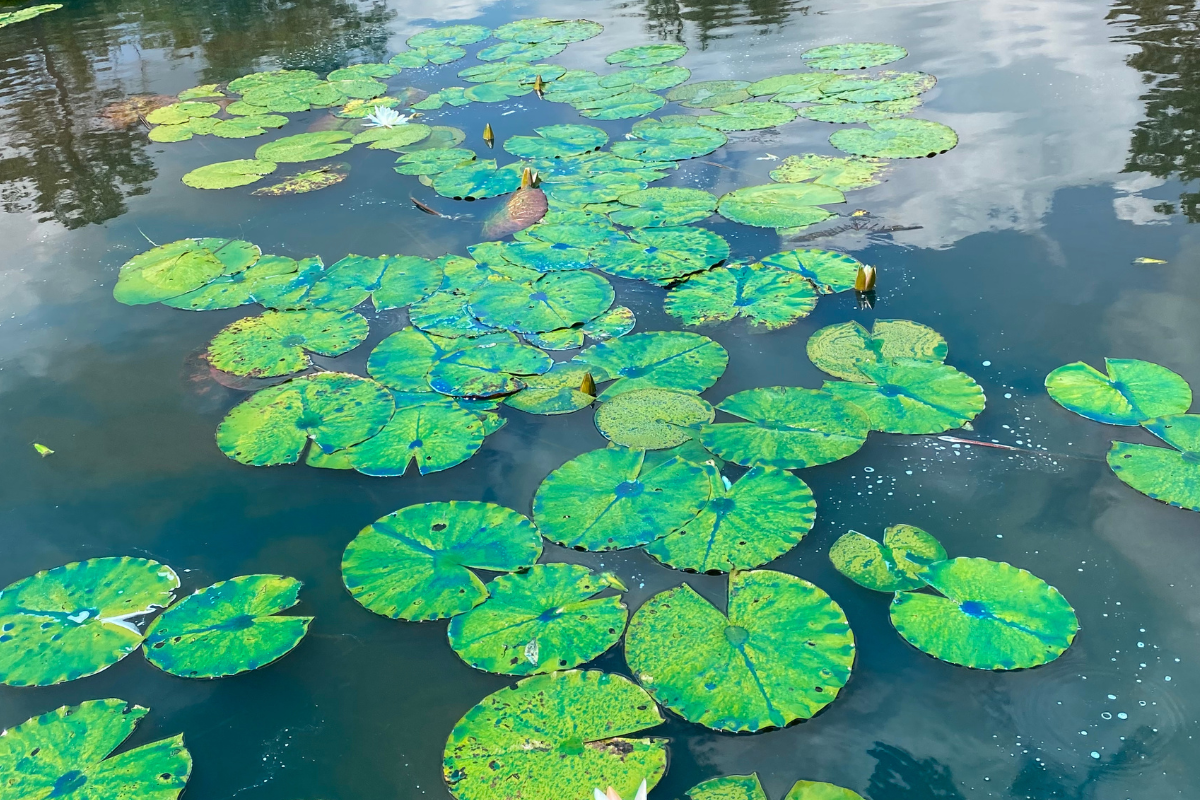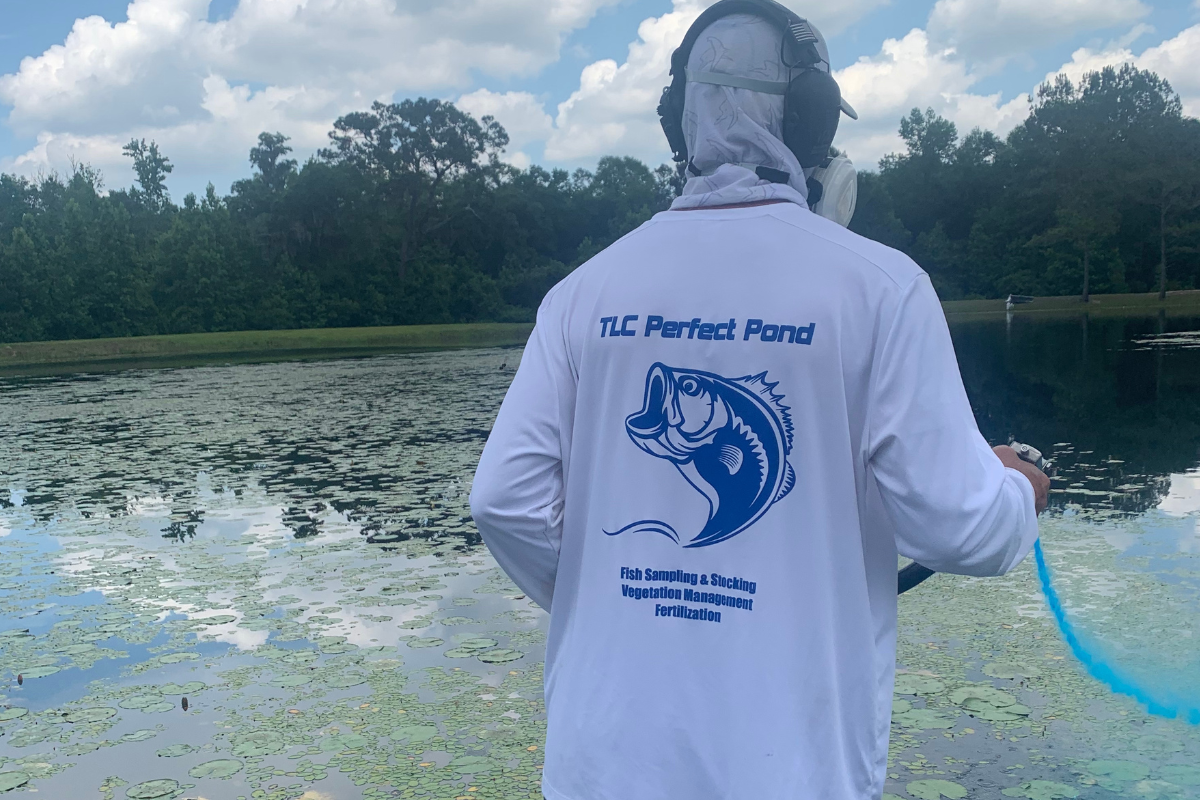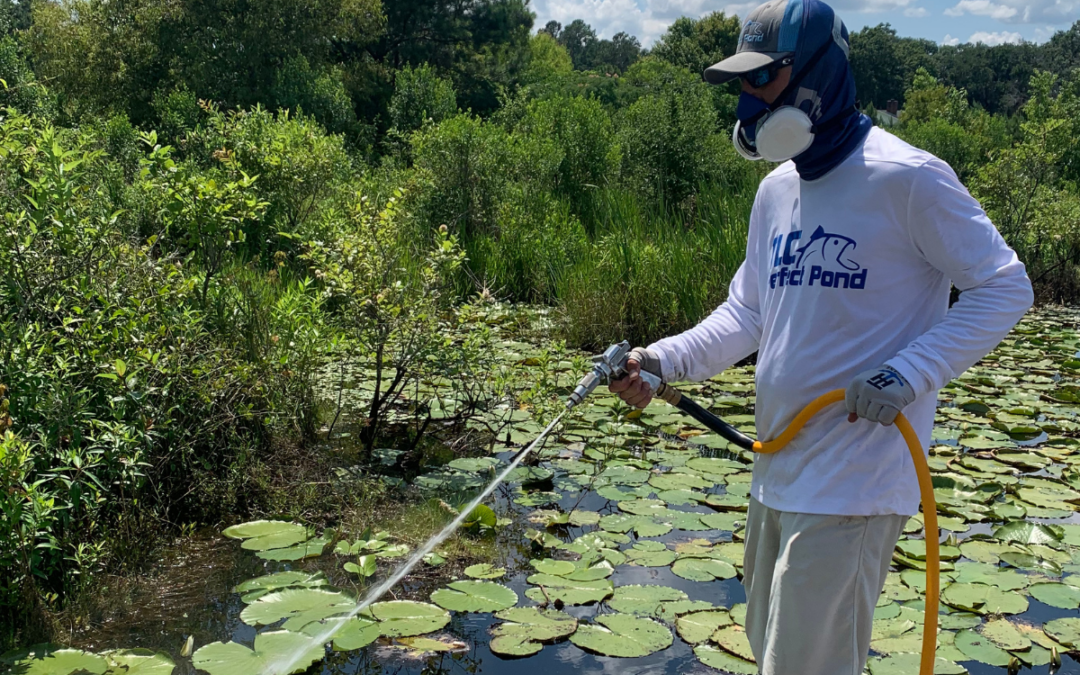Water lily (Nymphaea spp.) can add a beautiful color contrast to any pond or lake, but it can also be very problematic when there’s too much of it. In this blog, we’ll discuss the issues that excessive water lily cover can create for ponds and lakes. Then we’ll discuss potential solutions for managing this surface vegetation effectively over time.
Problems Created by Water Lily
We recommend no more than 20% surface area coverage by water lily in a pond or lake. Some fisheries biologists will lean more towards 25%, but we think 20% is a safe number. When lilies occupy more than 20% of the pond or lake surface area, they obviously make boating and fishing more difficult. But they can also cause problems for the fish populations in the pond.
Excessive lilypad coverage can impede fish movement, especially for predators at the top of the food chain. When pond lilies are overpopulated, largemouth bass can’t effectively capture prey. They’re not able to eat as often as they should or they expend too much energy trying to capture prey. As a result, largemouth bass in ponds with overgrown lilies will usually be below standard weight or have stunted growth.
Large patches of water lilies can create oxygen issues for the fish in a pond or lake. The free exchange of oxygen happens at the surface of a pond or lake, where oxygen is absorbed from the atmosphere. When the pond surface is covered by lilies, this oxygen exchange is compromised. The result is that the fish in the pond have limited dissolved oxygen.

Physical Removal of Water Lily
Physical or mechanical removal of water lily in pond or lake is a temporary solution. It will reduce their presence for a a few months, but they’ll often grow back sooner than later. Water lilies reproduce from underground rhizomes and seeds, making them difficult to control by physical removal.
For very small ponds, some pond managers suggest pulling the lilies from the pond substrate. While this may work, it can be very labor intensive. This also doesn’t account for the seeds in the water that will continue to proliferate. There’s really no effective way to remove the seeds in the water. So even if you remove the entire plant, you’re not going to stop the reproductive cycle of the lily patch.
Biological Removal of Water Lily
While some subsurface pond weed species can effectively be controlled with biological methods, those don’t work for water lilies. Triploid grass carp will not eat water lily, so stocking those is not going to be an effective control method. Also, increasing pond fertility is not a viable solution because it is a surface weed. We can often increase pond fertility and reduce water clarity to minimize subsurface weed development, but it doesn’t do anything to manage lily populations.

Chemical Removal of Water Lily
The most effective water lily control method we have found is chemical removal. They can be easily killed using approved aquatic herbicides that don’t affect the animal life in the pond. Large expanses of water lilies may require repeated applications, but we can significantly reduce the water surface coverage with each application.
One caveat to chemical removal is being able to access the entire patch of water lilies. For large patches, it may be difficult to access and spray the entire patch via a boat with a traditional outboard motor. But our airboat spraying rig allows us to access the entire pond and treat large areas at one time.
Because water lilies can be easily killed with contact herbicides, we can easily control what areas are sprayed. This allows us to only kill the water lilies and not affect any of the other pond vegetation that should be preserved. Unlike some aquatic herbicides that are sprayed downward into the water, contact herbicides are able to be applied more precisely.
Let Up Help Improve Your Pond!
If you’re in the south GA or north FL areas and need help with vegetation control in your pond or lake, complete this form and we’ll contact you to schedule a time to meet. We look forward to turning your pond into a productive fishery for years to come!

